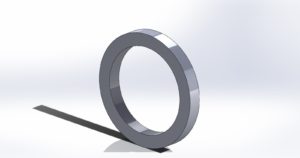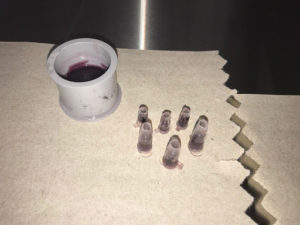Valve Design
The final selection for valve design was to utilize a hydrogel valve without an anchoring mechanism. The selected hydrogel is PyKC.
This hydrogel is favorable due to its chemical properties. From literature, PyKC is insoluble in water, can withstand the pHs present in urine, and is degradable in DMSO, an FDA-approved chemical for bladder flushing, making it feasible for simple removal purposes. The valve will sit right at the vesicoureteral junction, behind the flap to support its backflow prevention.

In order to make the finalized hydrogel, the protein mixture was mixed with Tris HCL buffer and food coloring was added for visibility during experiments. The hydrogel is 1% PyKC by weight, which was mixed into the buffer and left to sit overnight in the fume hood. We were provided a small sample of the protein peptides from our collaborator, Dr. Das.

Delivery Mechanism Design
The main goal of the delivery device is to utilize entryway through the urethra, eliminating incision from surgery. To do this, we based this off the placement of a urinary stent. Our design aims at protecting the hydrogel as it moves through the urinary system. To do so, the hydrogel will be loaded into the encapsulation device and fed along the guidewire until in position at the ureter, where the pusher will push the hydrogel up into the ureter before being removed. This was 3-D as ABS plastic at TCNJ, which was fine because it did not need to be sterile, but if it were to undergo further testing, it would be printed as polyvinyl chloride, an already utilized material in catheters that is ethylene oxide sterilizable. Our prototype was printed as 3mm in order to fit into a pig ureter for testing, but, if mass produced, will follow the standard French sizing system for catheters.
